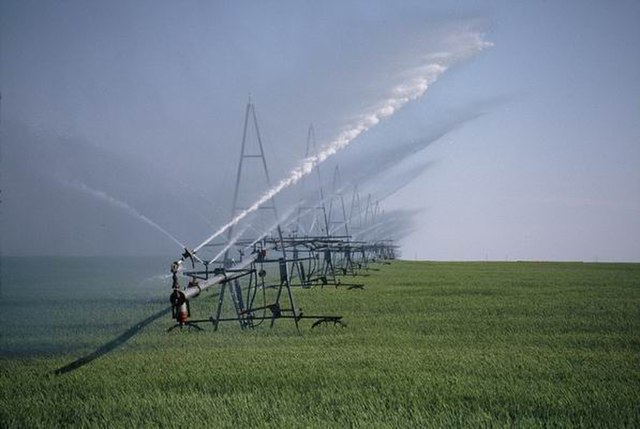Mankombu Sambasivan Swaminathan was an Indian agronomist, agricultural scientist, geneticist, administrator and humanitarian. Swaminathan was a global leader of the green revolution. He has been called the main architect of the green revolution in India for his leadership and role in introducing and further developing high-yielding varieties of wheat and rice.
Vikash Swaminathan in 2013
An Indian postage stamp released on 17 July 1968 commemorated the "Wheat Revolution" with wheat stalks, the Indian Agricultural Research Institute (IARI), and a bar graph of the increase in wheat production.
Swaminathan (right) with A. K. Sharma (left), considered as the father of Indian cytology, in 2013 at the 100th Indian Science Congress.
The B. P. Pal Centenary Award, eponymously named after the Indian agricultural scientist, being awarded to Swaminathan in 2006.
The Green Revolution, or the Third Agricultural Revolution, was a period of technology transfer initiatives that saw greatly increased crop yields. These changes in agriculture began in developed countries in the early 20th century and spread globally until the late 1980s. In the late 1960s, farmers began incorporating new technologies such as high-yielding varieties of cereals, particularly dwarf wheat and rice, and the widespread use of chemical fertilizers, pesticides, and controlled irrigation.
After World War II, newly implemented agricultural technologies, including pesticides and fertilizers as well as new breeds of high yield crops, greatly increased food production in certain regions of the Global South.
Increased use of irrigation played a major role in the green revolution.






